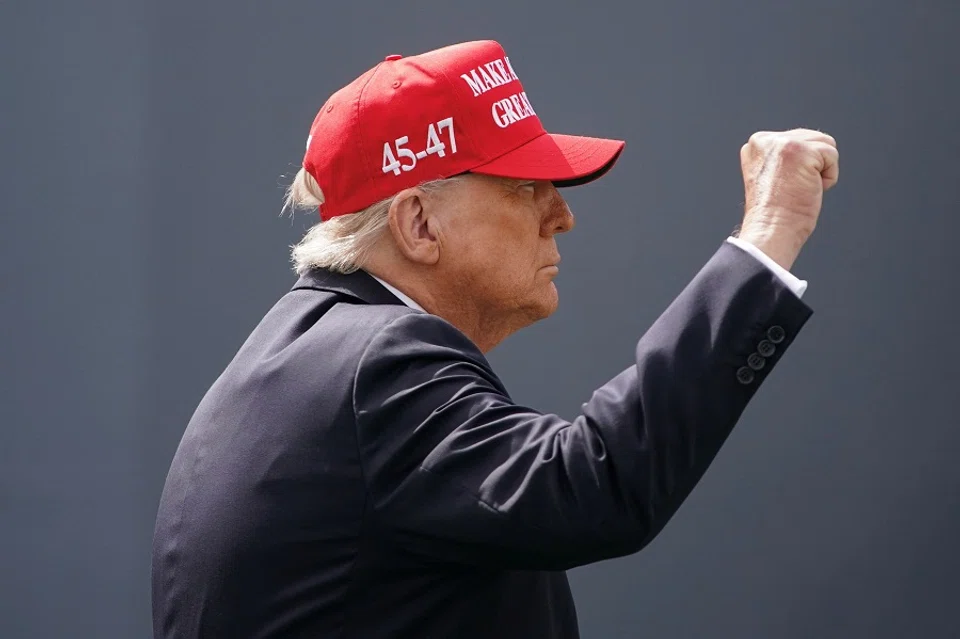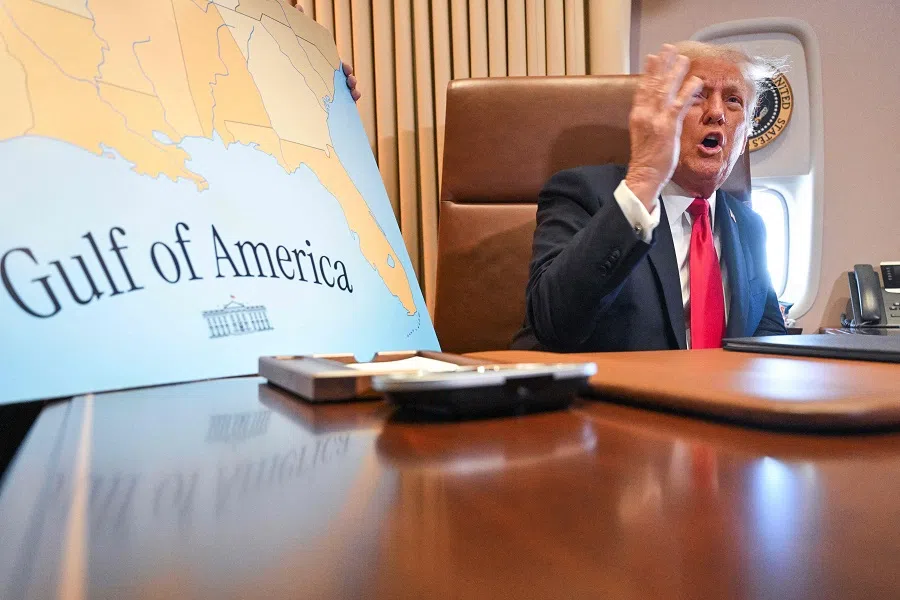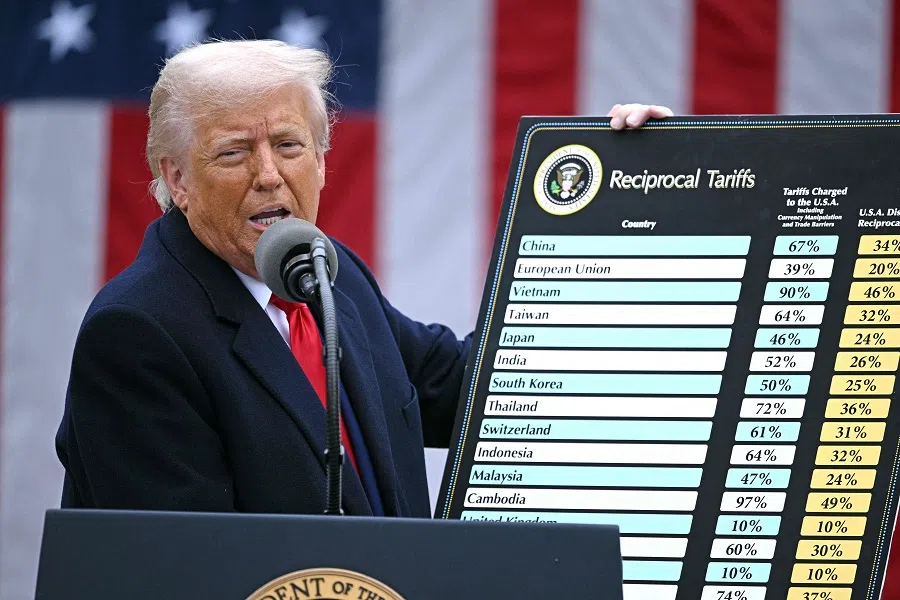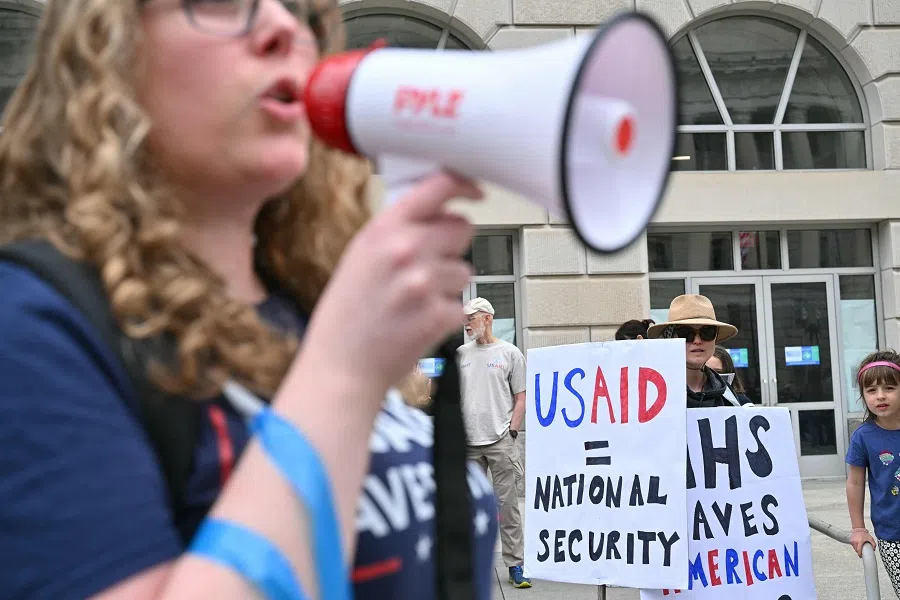The Trump trap: Sowing chaos, reaping rewards
As US President Donald Trump tries to get the rest of the world in line with what he wants, and despite arguments to the contrary, it is clear that the US is bent on reaping all it can from other countries for its own interests. Academic Chen Liujun explains what the US has in mind.

One hundred days after the inauguration of the Trump 2.0 administration, while the world is still reeling from the administration’s recklessness and wilfulness, and even as many have dismissed its measures as destined to backfire, the US has quietly begun “reaping” benefits from the rest of the world.
When international society compares its current relationship with the US to the pre-Trump era — rather than to the demands made during his presidency — the evidence of this “reaping” becomes clear.
While Trump’s initial policies upon taking office were indeed demanding, seemingly outlandish or even ludicrous, after his opponents reacted with outrage and began to cautiously negotiate, they would suddenly realise that they can no longer return to the past and are now forced to accept a position of being “reaped”. This exploitation manifests in the various tangible gains for the US. While these processes unfold, recent developments suggest the US is poised to reap substantial benefits.
Regarding Panama, the Trump administration, using only strong rhetoric, pressured the country to withdraw from China’s Belt and Road Initiative...
Trump’s expansionism: words as weapons
On territorial issues, Trump 2.0 has revived expansionist ambitions and has already taken concrete action, specifically targeting three territorial objectives: Panama, Canada and Greenland. Regarding Panama, the Trump administration, using only strong rhetoric, pressured the country to withdraw from China’s Belt and Road Initiative, agree to US military personnel being deployed to Panama-controlled facilities for training, and incited Li Ka-shing’s CK Hutchison to sell its operational rights over ports in the Panama Canal.
When it comes to Canada, Trump’s remark to make Canada the US’s 51st state pressured former Canadian Prime Minister Justin Trudeau into early resignation. His successor, Mark Carney, continues to face pressure from such remarks and may ultimately pay the price in trade and other sectors.

As for Greenland, the US has deployed a high-powered delegation of US officials, including Vice-President JD Vance, to assess the island, actively enticing and pressuring the newly-elected parliament to join the US or at least sign a Compact of Free Association similar to those with some Pacific Island nations, in order to gain control over the world’s largest island. As for renaming the Gulf of Mexico the “Gulf of America”, although this holds little practical significance, it serves as a clear declaration of the US’s territorial ambitions to the world.
Trump’s trade trap
On the tariff and trade wars, the first 100 days of Trump 2.0 have been unbelievably chaotic and reckless. It began with sharp tariff increases, followed by selective exemptions and grace periods, and then substantial tariff reductions. This approach has left many nations disoriented and on the brink of unified resistance.
... after what seemed like a series of erratic moves by the Trump administration, many regions and countries around the world no longer enjoy the trade benefits of zero or low tariffs with the US.
But since reaching a temporary trade deal with China on 12 May, the world has suddenly realised that the trading environment with the US has shifted dramatically compared to the pre-Trump era. If anyone still feels lucky for having seemingly thwarted Trump’s audacious goals through collective effort, they may have actually fallen into his trap, mistakenly believing they had won while suffering significant losses.
This is because, after what seemed like a series of erratic moves by the Trump administration, many regions and countries around the world no longer enjoy the trade benefits of zero or low tariffs with the US. Instead, they now face tariffs of at least 10%, with several countries subjected to rates of 20%, 30%, or even higher. Additionally, they must contend with the threat of further negotiations, leaving the future highly uncertain.

Compared to the pre-Trump era, the US has significantly improved its trade environment through tariff and trade wars, not only increasing government revenue but also having the potential for reshoring.
In comparison, other countries are facing much worse trade conditions with the US, forcing many industries to face contraction or relocation pressures, and the need to urgently find alternative markets to replace the US. The fair trade that Trump advocates is, in fact, highly unfair to many developing countries, making it extremely difficult for them to achieve rapid progress.
These commitments mainly required Trump to make verbal promises or to do what was supposed to be done. Without making any significant change, the US was able to reap substantial benefits in the Middle East that would have been impossible to achieve elsewhere.
Words for wealth: Trump’s Middle East windfall
In the highly controversial Middle East region, Trump visited Saudi Arabia, Qatar and the United Arab Emirates (UAE) in mid-May, marking the first foreign state visit of his second term (excluding attending Pope Francis’ funeral). Yet, he reaped far greater benefits than his first-term visit to the same region.
In Saudi Arabia, he secured a US$142 billion arms deal, surpassing the US$110 billion deal from eight years ago, along with a US$600 billion investment commitment. In Qatar and the UAE, he even secured investment agreements worth over a trillion dollars, as well as a US$400 million plane gift. These are real financial gains for the Trump administration, which explains Trump’s particular affinity for these wealthy Middle Eastern countries.
Meanwhile, the commitments required from the US were minimal and highly disproportionate. Essentially, they only needed to promise to provide certain levels of military equipment, maintain a military presence in the region, stop attacking the Houthis in Yemen, lift sanctions on Syria’s new regime and avoid actions that would lead to a large-scale humanitarian disaster in Gaza.
These commitments mainly required Trump to make verbal promises or to do what was supposed to be done. Without making any significant change, the US was able to reap substantial benefits in the Middle East that would have been impossible to achieve elsewhere.
From policeman to spectator
At the same time, reducing expenditures is also a form of gain, and this has similarly become an important way for the US to reap benefits from the world. For the Trump administration, this was primarily evident in three areas: one, it withdrew from many international treaties and organisations, and dismantled numerous foreign aid agencies and projects, including the United States Agency for International Development (USAID). The US government saved on expenditures by abandoning international responsibilities, blatantly ignoring global crises that require collective action, such as climate change and humanitarian disasters.
One should not be misled by setbacks to some of its policies, or fooled by the seemingly chaotic nature of some of its actions.

Two, in terms of the Russia-Ukraine war, it initially aimed to force Ukraine to make concessions, then after signing mineral agreements with Ukraine, sought to pressure Russia to make concessions. After being met with resistance from both sides, it then wants to disengage, leaving Europe to deal with the mess. The Trump administration seems to think that standing idly by or opportunistically profiting from the conflict could well be the smartest approach to the Russia-Ukraine war.
Three, keeping their distance from global hotspots and avoiding unnecessary involvement. For example, during the current India-Pakistan conflict, Vance has explicitly asserted that the US will not “get involved in the middle of a war that’s fundamentally none of our business”. Although such a detached attitude in the face of major regional crises clearly deviates from the US’s historical role as the “world’s police”, it is an important way by which the US preserves its strength and avoids depletion of resources.
A clear comparison between the first hundred days of Trump’s presidency and the period preceding it reveals clear signs of the US “reaping” the world. One should not be misled by setbacks to some of its policies, or fooled by the seemingly chaotic nature of some of its actions. Viewing the US under Trump’s leadership through this lens of “reaping” reveals a lack of goodwill towards the world and a preoccupation with self-interest. While this approach may not benefit the US in the future, it is currently detrimental to the world.
This article was first published in Lianhe Zaobao as “特朗普开始“收割”世界”.





